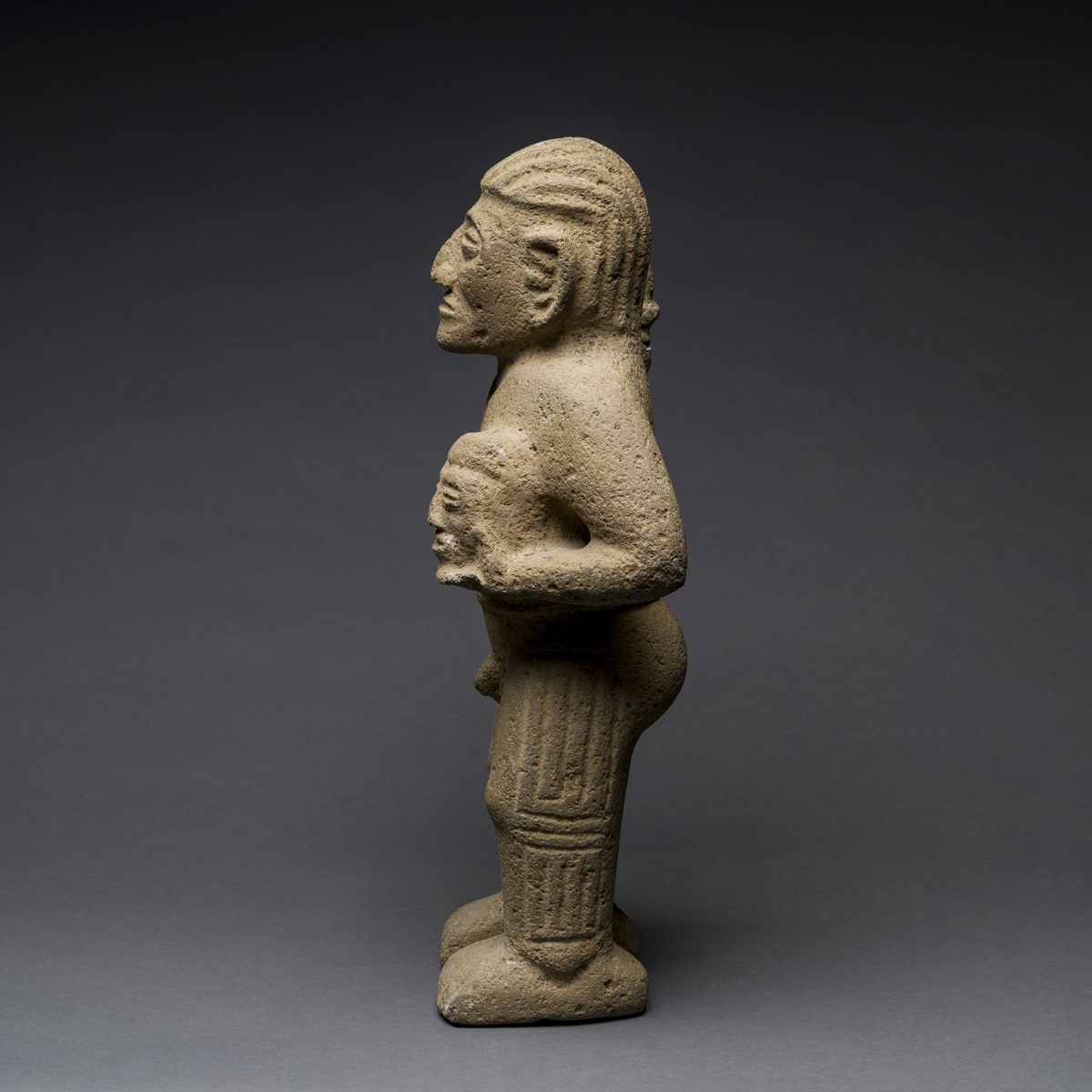Basalt Statue of a Warrior, 500 CE - 1000 CE
Basalt
43.2 x 22.9 cm
17 x 9 in
17 x 9 in
PF.4427
Further images
Probably as a result of a change in ritual activity, independent figural sculpture gained prominence in the Atlantic Watershed region during period IV (1000 B.C.-500A.D). A stone figure, such as...
Probably as a result of a change in ritual activity, independent figural sculpture gained prominence in the Atlantic Watershed region during period IV (1000 B.C.-500A.D). A stone figure, such as this handsome example, represented the end of a long and violent cycle considered essential to securing fertility of the land and of human beings. Human sacrifice began with prisoners taken in battle, often waged expressly for that purpose. This statue shows the noble warrior holding the head of his defeated opponent in one hand, and an axe in the other. His stance is deviant and proud, a symbol of his dominance on the battlefield. It is probable he was intended as part of funerary accouterments of a great warrior. Though, considering the importance such figures had in society, he may well have adorned the home of a prominent warrior or chief. Occasionally figures carry two heads, suggesting such statues were made as commemorative offerings. The absolute power of this warrior, the sheer male strength and naked confidence is as impressive as the volcanic stone from which he is made; and both artistry and material attests to the sculptor's extraordinary ability in a very difficult medium.







